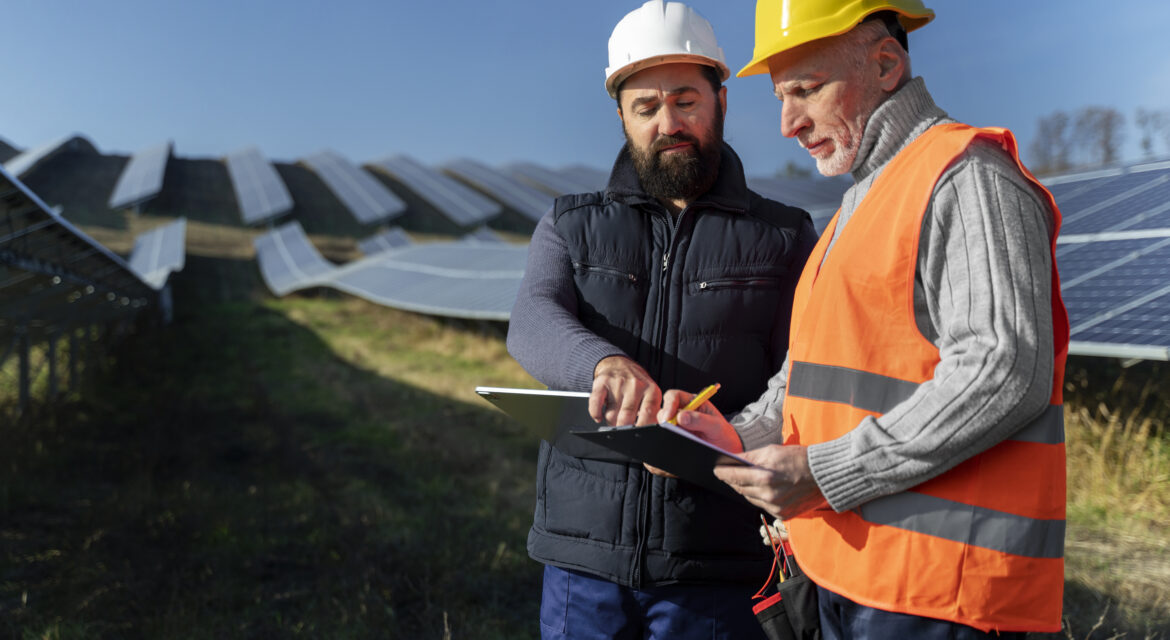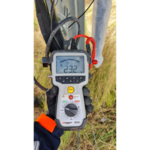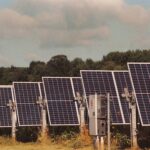Australia’s fast-growing utility-scale solar sector is transforming the nation’s energy landscape. As demand for renewable power rises, solar farms are proving to be a practical and scalable solution. Their success, however, begins with the land on which they’re built, and not every site is suitable for solar development. Because of this, a thorough land assessment is carried out to evaluate a project’s long-term viability. These assessments take into account geographic features and considerations regarding construction project management. That said, this guide offers a practical approach to land evaluation to support planning for future solar developments.
Factors That Influence Solar Farm Land Feasibility
Choosing the right parcel of land is one of the most critical steps in developing a successful solar farm. Beyond selecting a sunny location, developers should also assess the following factors:
Solar Irradiance
Identifying land with high solar irradiance is fundamental to designing a solar farm project. Areas consistently exposed to sunlight throughout the year influence energy yield and return on investment. To make this work, site-specific solar data must be verified through long-term datasets or solar mapping tools to ensure optimal performance across the project lifespan.
Topography and Terrain
Ideally, building a solar farm should be on a flat or slightly sloped terrain. Uneven ground complicates project planning and increases construction costs, particularly when deploying fixed-tilt or tracking systems. Besides topography, factors like water flow and soil erosion patterns influence how a site changes over time. These elements shape long-term site management through pedogenesis, the natural soil formation and development process.
Soil Conditions and Drainage System
Soil-bearing capacity refers to the ground’s ability to support the structure’s weight. It affects the decision to choose feasible solar mounting systems. In addition, a good drainage system should be integrated into the construction project management to prevent water flooding around the infrastructure, which can lead to complications and reduced system reliability.
Grid Proximity and Infrastructure Access
Access to suitable grid infrastructure is one of the most limiting factors in land feasibility. Sites far from substations or high-voltage lines may become non-viable due to prohibitive connection costs. Electrical engineering companies help evaluate interconnection potential, transformer compatibility, and substation siting as early as the land selection phase.
Planning and Regulatory Constraints
Local government councils, state government agencies, and the federal government dictate environmental overlays and regulations on what can be done on a parcel of land. Some locations may require an extensive permit process or are unsuitable due to ecological or cultural protections. Early compliance with regulatory frameworks helps prevent unexpected delays in the development timeline.
How to Make a Solar Project Site-Ready
Developing a solar farm takes more than just installing panels. A site must be technically, legally, and physically prepared before any construction begins. Below are the key steps to ensure your project site is ready and compliant for construction:
1. Secure Development Approvals and Compliance Pathways
Start by obtaining the necessary Development Approval (DA) from the local planning authority. This includes complying to zoning, environmental, and biodiversity requirements. Simultaneously, initiate your Generator Performance Standards (GPS) submission to the network service provider as part of the grid connection process.
In addition, ensure you also apply and secure the following:
- Connection Agreement (CA) or Offer to Connect from the DNSP or TNSP
- Construction Certificates (CCs) for civil and electrical works; and
- Any additional local council permits (e.g. for drainage, roads, stormwater)
2. Finalise Detailed Design and Issue IFC Documentation
Once approvals are carried out, your engineering team can complete the detailed design that includes the following:
- Site layout and internal road design
- Cable routing and trenching
- Inverter locations and switchgear layouts; and
- SCADA, communications, and protection schemes
After internal reviews and coordination with stakeholders, the design can be Issued for Construction (IFC) which forms the official reference for procurement and construction.
3. Complete Site Preparation and Civil Works
When design and approvals are in hand, the physical preparation can begin by clearing and grading the land, constructing access roads and drainage infrastructure, and implementing erosion control and dust suppression measures. These works must follow environmental conditions to align with IFC documentation and avoid delays or rework.
4. Align Electrical Design with Site Conditions
Ensure that the electrical design integrates well with the site’s physical conditions. This involves optimising trench routes and cable lengths, coordinating inverter skids and reticulation, and ensuring access to metering and point of connection infrastructure. In addition, engaging with an experienced electrical consultant early can help reduce field changes and construction risk.
5. Coordinate with Utilities and Stakeholders
Grid-connected projects require proactive engagement with:
- DNSPs or TNSPs for GPS and connection agreement milestones
- Local governments and landowners; and
- EPCs and construction partners to align timelines and deliverables
By running utility coordination simultaneously with site works, the GPS testing, compliance studies, and connection ensures that approvals remain on track.
6. Manage the Site During Construction and Operation
Effective site control is key to a project success. This is why it is important to maintain the following during and after construction:
- Safe vehicle and personnel access
- Ongoing dust, sediment, and vegetation management; and
- Panel and cable inspections for safety and performance
Through proactive operational site management, adherence to long-term compliance and reliable system output is ensured.
Plan Smarter, Build Better with ElectraGlobe
Land assessment goes beyond initial planning and forms the backbone of any successful solar project. When combined with integrated construction project management, it helps transform early concepts into clear, buildable strategies. A thorough evaluation supports timely regulatory approvals, ensures engineering plans are practical, and prepares the site for long-term performance.
ElectraGlobe offers construction management services that cover everything from project planning to safety and quality assurance. Our team ensures your solar farm is built efficiently, safely, and fully compliant with industry standards. For more information, check out our services today!
Frequently Asked Questions (FAQs)
There are other important considerations in land assessment and site selection for solar farms left unanswered. Here are answers to common questions asked:
What is the minimum land size for a solar farm?
For utility-scale solar farms, the minimum land requirement is typically 4 to 6 acres per megawatt (MW) of installed capacity. This estimate accounts the space for solar panels, inverter stations, access roads, setbacks, and grid infrastructure. The total land needed may also vary by the site’s topography, panel layout (fixed or tracking), and environmental constraints such as buffer zones or vegetation offsets.
What is the best environment for solar panels?
The ideal environment for solar panel performance typically have:
- High solar irradiance (strong, consistent sunlight)
- Minimal shading from trees or nearby structures
- Low humidity to reduce soiling and degradation; and
- Moderate ambient temperatures, as excessive heat can reduce panel efficiency
In addition, having an open, dry, and well-ventilated locations such as those found in regional Australia are optimal for maximising energy yield and system lifespan.
Where are solar farms located in Australia?
Solar farms in Australia are mainly located in regions that have high solar irradiance, available land, and proximity to grid infrastructure. The leading states that have solar plants include Queensland, New South Wales, South Australia, and Victoria. These locations offer favourable development conditions and existing transmission networks for solar projects. Many large-scale systems are concentrated in these areas because of its accessibility and higher solar yield.







